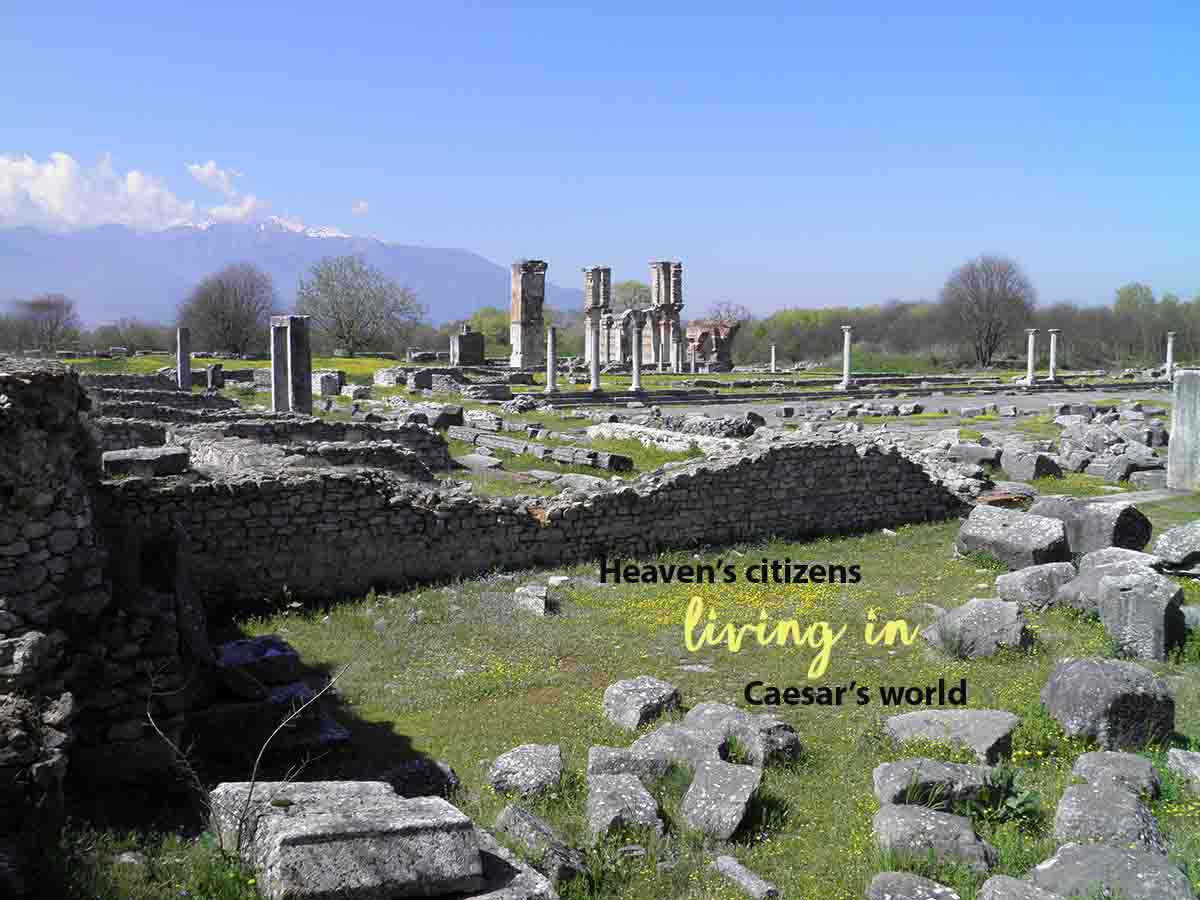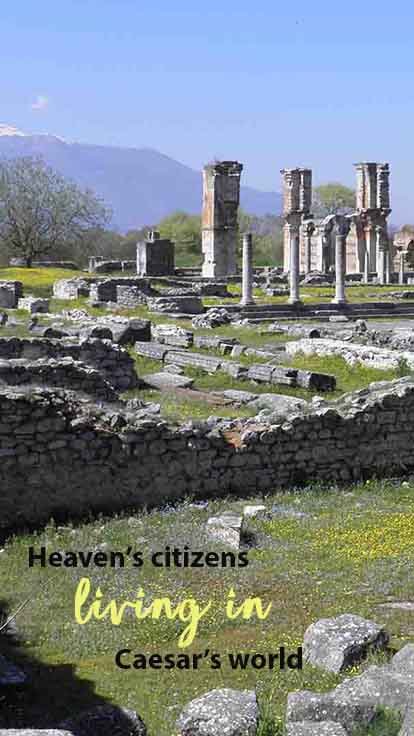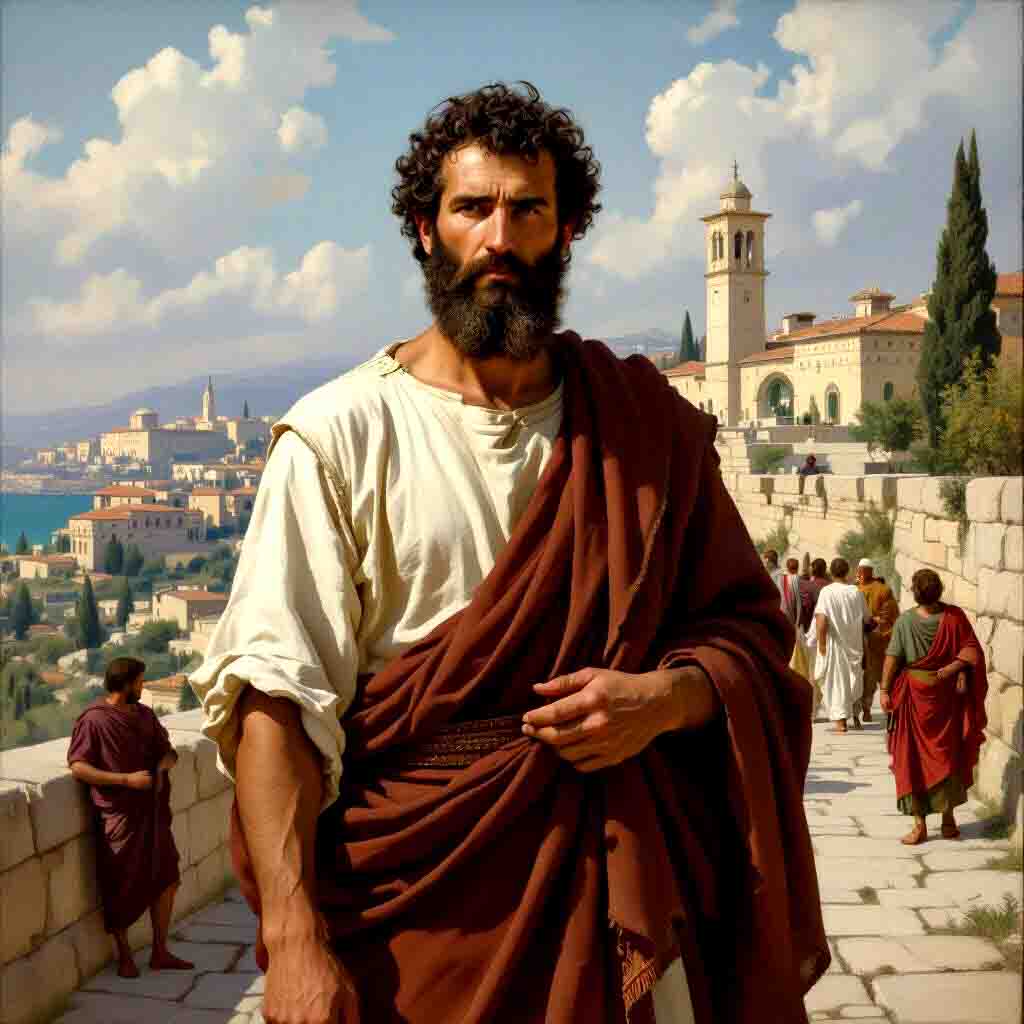


An Overview of the Book of Philippians

Surveying the land is the first step in any great discovery. Before any excavation begins, explorers must study the unknown terrain, map the surroundings, and gain a sense of the landscape. In your study of the Bible, surveying the land means stepping back to understand how a particular book fits into the larger story God is telling. Like using a compass and a map, this equips us with the tools we need to navigate Scripture faithfully.
The Book of Philippians
Heaven’s citizens living in Caesar’s world
Welcome to Philippi, a bustling Roman colony in the heart of Macedonia. Veterans of Caesar’s armies fill its streets, proud of their citizenship and privileges. Latin tongues echo through the forum, temples to foreign gods rise around every corner, and the Via Egnatia carries travelers and traders across the empire. Into this strategic city, Paul brought the message of the one true King — Jesus Christ — and a new citizenship in heaven.
Philippians is a letter born in chains but overflowing with joy. Written from prison in the early 60s, Paul encourages believers to stand firm, to press forward, and to live as worthy citizens of God’s kingdom. In a world that glorified power and honor, Paul points to the humility of Christ as the true pattern of life. Strap on your sandals, open your scroll, and join us as we journey into Paul’s most personal letter of encouragement.
Determining the Audience
The original recipients
The Philippian church was Paul’s first congregation in Europe [Acts 16:12–40]. Its founding members included Lydia, a wealthy merchant of purple cloth, and her household, as well as the Philippian jailer and his family. From the beginning, women held an influential role in the life of the church [Philippians 4:2–3].
The believers at Philippi were generous partners in Paul’s mission, sending him financial gifts when other churches did not [Philippians 4:15–18]. One of their own, Epaphroditus, carried their support to Paul during his house arrest and, after recovering from a serious illness, brought the very letter of Philippians back to his home church. This was no casual audience. The Philippians were Paul’s “joy and crown” [Philippians 4:1], and he wrote to them as dear friends who had walked with him through years of hardship and triumph.
Sifting through the Setting
The historical background
The story of Philippians begins on Paul’s second missionary journey, around AD 50, when the apostle, along with Silas, traveled through Asia Minor. Their original plan had been to preach in Bithynia, but Luke tells us that “the Spirit of Jesus did not allow them.” At Troas, Paul received a vision of a man from Macedonia pleading, “Come over to Macedonia and help us.” Convinced that God had opened the door for the gospel, they set sail immediately and entered Europe for the first time. Their ship landed at Neapolis, and from there they traveled along the great Roman road, the Via Egnatia, ten miles inland to Philippi [Acts 16:7–12].
Philippi was no ordinary city. Founded centuries earlier, it was reestablished by Mark Antony and Octavian after their victory in the Battle of Philippi in 42 BC. Declared a Roman colony, Philippi became a settlement for retired soldiers who enjoyed special privileges. Its citizens were exempt from certain taxes and were granted the coveted rights of Roman citizenship. The city bore the imprint of Rome at every turn: Latin inscriptions, a Roman forum, temples to Roman gods, and an atmosphere of pride in Caesar and the empire. To live in Philippi was to breathe in Roman culture, law, and loyalty.
When Paul arrived, he discovered that the Jewish population was so small that there was not even a synagogue. Instead, there was only a small place of prayer outside the city gate along the river. There he met a group of women, including Lydia, a merchant of purple cloth from Thyatira. The Lord opened her heart to believe, and she and her household were baptized. Lydia then offered her home as the meeting place for the new church [Acts 16:13–15].
Paul’s ministry in Philippi quickly faced opposition. After he cast a demon out of a slave girl who had been making her owners wealthy through fortune-telling, her masters dragged Paul and Silas before the city magistrates. Accused of disturbing the city and advocating customs unlawful for Romans, they were stripped, beaten with rods, and thrown into prison. Yet even in chains, they prayed and sang hymns at midnight. Suddenly, an earthquake shook the prison, opening the doors and loosening every chain. When the jailer awoke and prepared to kill himself, Paul stopped him, proclaiming that all the prisoners were still there. Trembling, the jailer fell before them and asked, “What must I do to be saved?” That very night, he and his household believed and were baptized [Acts 16:16–34].
The next day, the magistrates attempted to dismiss Paul and Silas quietly. But Paul, invoking his Roman citizenship, demanded that they escort them out publicly, exposing the injustice that had been done. Before leaving Philippi, Paul encouraged the new believers who gathered in Lydia’s home, strengthening this fledgling church that was now a beacon of the gospel in Europe [Acts 16:35–40].
Nearly ten years passed before Paul wrote to these believers again, around AD 62, now under house arrest in Rome. In that decade, the Philippian church grew strong in faith and became one of Paul’s most loyal supporters. They had sent aid to him more than once, both in Thessalonica and later during his ministry [Philippians 4:15–16]. When they heard of his imprisonment, they sent one of their own members, Epaphroditus, to deliver a gift and to care for him. This gift, sent across a great distance and at significant personal cost, demonstrated their ongoing devotion to the gospel and to Paul himself.
Uncovering the Layers
The meaning
At its core, Philippians is a letter about life in Christ. Every line pulses with the reality that union with Christ shapes the believer’s identity, conduct, and hope. For Paul, Christ is not only the center of theology but the very center of life itself: “For to me, to live is Christ and to die is gain” [Philippians 1:21]. Christ’s presence defines life, and death is transformed into gain because it ushers the believer into His presence.
The letter calls the Philippians to imitate the humility of Christ. The hymn of Christ is the theological summit of the letter and one of the highest peaks in the New Testament. It proclaims that though Jesus was in very nature God, He did not cling to His status but emptied Himself, taking the form of a servant, and became obedient to the point of death, even death on a cross. Because of His humiliation, God exalted Him and bestowed on Him the name above every name. This Christological hymn is not mere doctrine but a model for discipleship: as Christ humbled Himself for others, so His people must live in humility, service, and sacrificial love [Philippians 2:5-11].
Philippians also teaches that the Christian life is marked by joy in the midst of suffering. Paul writes while chained to the praetorian guard, uncertain of his future, yet he rejoices because the gospel is advancing. He calls the Philippians to the same posture: to rejoice in the Lord at all times. Joy does not come from circumstances but from knowing Christ, who strengthens His people in every situation. This joy, grounded in Christ, transforms suffering into an opportunity for witness and shapes the church into a community of hope.
Another theological heartbeat of Philippians is citizenship in heaven. In a colony that celebrated its Roman privileges, Paul reminded the church that their truest identity was not as citizens of Rome but of heaven. This heavenly citizenship calls believers to live differently: to stand firm in one spirit, to strive side by side for the faith of the gospel, and to shine as lights in a crooked and twisted generation. Their allegiance is not to Caesar but to Christ the Lord, whose return will bring the transformation of their lowly bodies into the likeness of His glorious body.
Finally, Philippians emphasizes that salvation is the work of God from beginning to end. Paul assures the church that the very one who began a good work in them would bring it to completion on the day of Jesus Christ. Believers are called to “work out” their salvation with fear and trembling, yet it is God who works in them to will and to act according to His good pleasure. The Christian life is both an active pursuit and a Spirit-empowered gift. Righteousness is not gained through the law but through faith in Christ, “the righteousness from God that depends on faith.”
How to Read
the Book of Philippians
A quick guide to
its writing style and structure
What kind of book is this?
Philippians is a letter written by Paul to his beloved church in the city of Philippi. It is not a cold theological treatise but a warm, personal letter filled with gratitude, encouragement, and joy.
Why is it written this way?
Paul is in chains, yet he writes with remarkable confidence and affection. His words remind the Philippians that even suffering cannot stop the gospel and that true joy is found in Christ, not in circumstances.
How is it organized?
The letter begins with thanksgiving and a report from Paul’s imprisonment. It then moves to exhortations for unity and humility, centered on the great hymn of Christ. Paul closes by warning against false teaching, urging perseverance, and thanking the church for their generous support.
What should I look for?
Pay attention to repeated words like “joy,” “rejoice,” and “mind.” Notice how Paul points to examples — Christ, Timothy, Epaphroditus, and even himself — to show what it means to live a life worthy of the gospel.
How should I read it?
Read it as a letter from a pastor who loves his people. Let it encourage you to rejoice in Christ, to serve others with humility, and to press on toward the prize of knowing Him more fully.
Synthesizing the Story
Fitting into scripture
Philippians stands at a key moment in the unfolding plan of God to bless the nations. The gospel that began with the promise to Abraham now crosses into Europe as the church at Philippi takes root through Paul’s ministry [Genesis 12:3] [Acts 16:11–15]. Their partnership with Paul shows that the mission is a family project. They share in grace, share in suffering, and share their resources for the advance of the word. When Paul calls their gift a fragrant offering and a sacrifice acceptable and pleasing to God, he places their generosity within the worship story of Scripture [Philippians 4:18].
At the center of the letter is the story of Jesus Himself. The Christ hymn celebrates the descent of the eternal Son into Servant form and His exaltation as Lord of all. This song tells the Bible’s great plot in miniature. The Servant obeys to the point of death, and God raises Him high, echoing the promises that every knee will bow and every tongue confess the Lord [Isaiah 45:23] [Psalm 110:1]. Philippians does not treat this as an abstract doctrine. It is the pattern for the church. The mind of Christ becomes the mind of His people. The path of the cross becomes the shape of their life together.
Philippians then gathers the people of God into that story with living examples. Paul pours himself out for the churches and rejoices that Christ is preached even while he is in chains. Timothy seeks the interests of Jesus Christ and serves as a faithful son at Paul’s side. Epaphroditus risks his life for the work of Christ and embodies the fellowship of the gospel. These portraits teach that Christian truth is not only confessed with the mouth. It is embodied in a community that prizes humility, unity, and sacrificial love.
The letter also locates the church within the hope of the last day. Believers run and strive and hold fast, yet their confidence rests in the God who began the good work and will bring it to completion on the day of Jesus Christ. Their true homeland is heaven, and they await the Savior who will transform their lowly bodies to be like His glorious body. This hope reorders values in the present. Paul counts everything as loss because of the surpassing worth of knowing Christ Jesus his Lord, and he presses on toward the prize of the upward call of God in Christ.
Finally, Philippians shows how the gospel reshapes ordinary life—the peace of God guards anxious hearts and minds. Contentment becomes possible in plenty and in want. Strength comes from Christ for every circumstance, and provision comes from God for every need. In a city that celebrated Roman privilege, the church learns to live as a colony of heaven, shining as lights in a dark world and making the story of Christ visible in daily faithfulness.
Key Verse
For to me, to live is Christ and to die is gain.
Philippians 1:21
Deciphering the Divine Message
What we learn
Why has God preserved Philippians for us? Because it shows us how to live joyfully and faithfully in a world that opposes Christ.
Philippians teaches us that:
- Joy is possible even in suffering because Christ is our life.
- True greatness is found in humility and service, not status or power.
- Our citizenship is in heaven, not in any earthly nation.
- God supplies strength for every circumstance.
The letter that began as a thank you has become a guide for all who long to live as worthy citizens of heaven. Philippians is not simply a letter to remember. It is a divine message to obey, a call to rejoice in Christ, to stand united, and to press on toward the prize of His upward call.
Want your own copy of the overview of Philippians?








